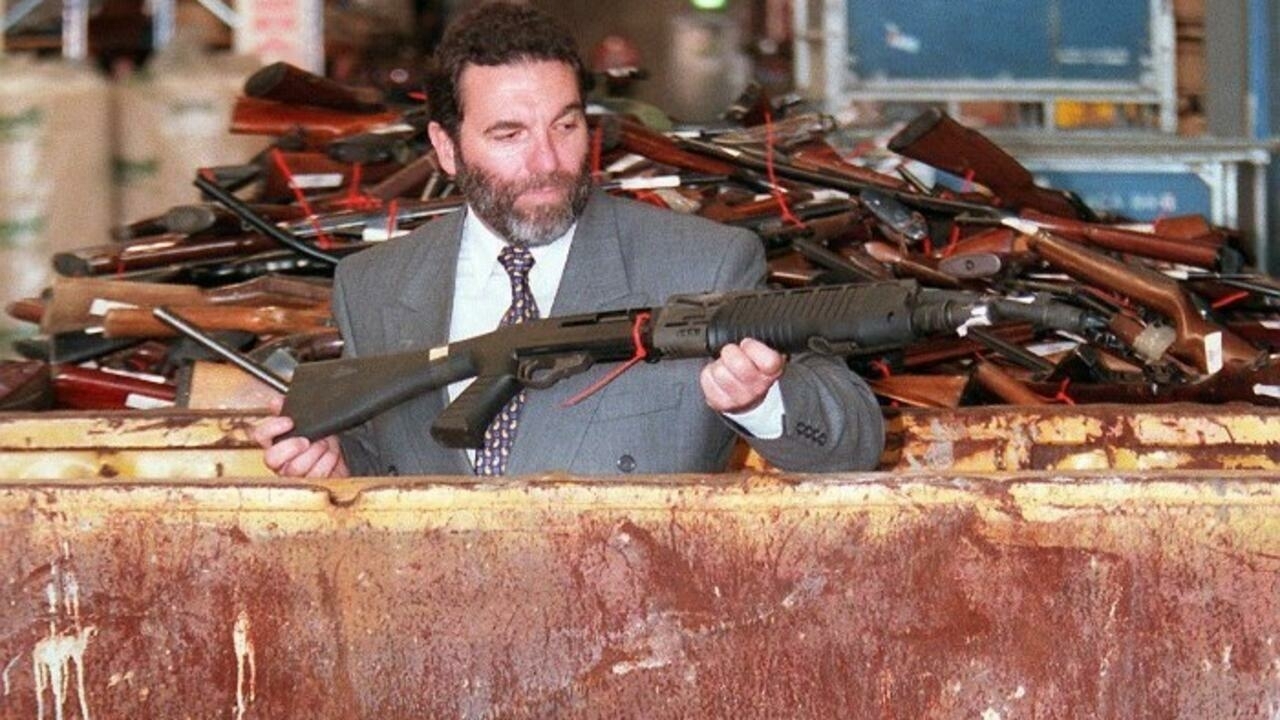Published on :
Considered an example of gun control, Australia in the 1990s began a massive state buy-back program for privately owned guns. A possible model to follow for the United States after the massacre that occurred Tuesday in Texas, even if such legislation is unlikely to be adopted there.
Columbine, Sandy Hook, Virginia Tech, Orlando, Las Vegas, Buffalo, Uvalde… With each mass killing, the debate on gun control resurfaces in the United States without leading to any questioning of the legislation. . A lack of political will that contrasts with the situation in Australia, a country often cited as an example for having dramatically reduced gun violence.
The turning point for Australia came on April 28, 1996. Martin Bryant, an unstable 28-year-old young man, walked into a cafe in Port Arthur, a tourist town in Tasmania, and opened fire with a semi-automatic rifle, making 35 dead and 28 injured. The worst mass shooting in Australian history.
The event serves as an electric shock. Twelve days later, the Australian government, led by John Howard, the recently elected Conservative Prime Minister, took action. « I knew that I had to use the authority of my office to control the possession and use of the kind of weapon that had killed 35 innocent people. I also knew that it would not be easy », recalls the head of government in a column published by the New York Times in 2012.
650,000 weapons disabled
In record time, John Howard succeeded in the tour de force of convincing the members of his coalition and the various Australian states to adopt a vast reform of the legislation on firearms. The National Firearms Agreement (NFA) drastically restricts the right to carry a weapon. It establishes a register of all weapons owned by individuals and imposes a license for all new weapons purchased.
The NFA also provides for the prohibition of automatic and semi-automatic rifles, as well as pump-action shotguns. Problem: several hundred thousand of these deadly weapons are already in circulation in Australia. To recover them, the State set up a program to buy back weapons, financed by a tax increase. Those who legally possessed this type of weapon thus receive financial compensation. As for the holders of illegal weapons, they do not obtain any compensation but are not prosecuted.
>> To read also: « Ghost weapons », this very real phenomenon that Joe Biden wants to fight
Despite fears of strong public resistance, Australia safely recovered and then destroyed, between October 1996 and September 1997, more than 650,000 firearms, or about 20% of all weapons held by individuals, according to the American online media Vox.
A dramatic drop in violence
Numerous university studies then proved the effectiveness of the new Australian legislation and of the policy of massive purchase of the most dangerous weapons. Harvard researchers showed in 2011 that in the seven years following the NFA, Australia experienced a 42% drop in firearm homicides and a 57% drop in suicides. Another Australian study entitled « Does the gun buy-back program save lives? » confirms this trend.
Overall, the scientific literature is clear on one point: the more firearms are accessible, the higher the risk of being the victim of a homicide by gunshot, recalls the University of Oxford.
Another element which seems to prove the effectiveness of the NFA: during the ten years which preceded the massacre of Port-Arthur, Australia had known 11 shootings. There was not a single one until December 15, 2014 and a hostage crisis in Sydney which left three people dead, including the author of the attack, reports the media Slate.
A success that makes John Howard, quoted by the Washington Post a few days after the Aurora massacre in Colorado in 2012, say that if Australia could take inspiration from the United States in many areas, « in terms of As far as weapons are concerned, we were right to take a completely opposite path ».
>> To see: Gun control: these American sheriffs who refuse to apply the law
However, Australian legislation is far from being easily transposable to the United States. Without a land border, Australia has a considerable advantage in controlling the circulation of firearms. The country can also count on an efficient and well-organized customs service, underlines the Australian study cited above.
More importantly, the NFA enjoyed broad political consensus. A scenario difficult to imagine in the United States, where each new killing seems to highlight the ideological gap between the Democratic and Republican camps. In the land of the sacrosanct Second Amendment, which guarantees the right of Americans to carry a weapon, such legislation still seems, at present, to be science fiction.
.
